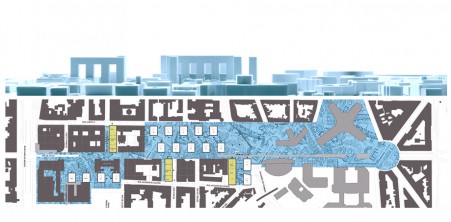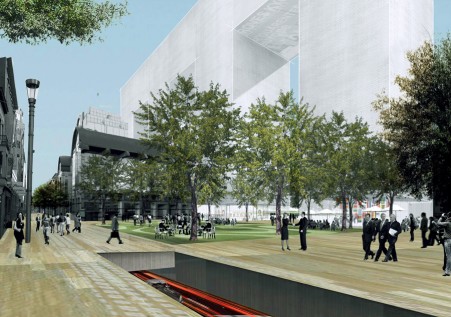The first issue is morphological, the second symbolic. To address the morphology, we introduce in Brussels the ancient European typology of the ‘portico’, the classical emblem of the ‘public’. It forms a screen of shifted footprints that introduces in the claustrophobic street wall of the Rue de la Loi a lateral depth of openings that defines a linear political space, if not an agora. The portico is ‘capped’ with federating elements parallel to the Rue de la Loi that defines a “European” axis.


At right angles to this political axis, housing and in general, the “private”, will be aligned perpendicular to the street, so that its bulk does not reinforce the pressure on the Rue de la Loi. As a skyline, the contrast between the ‘European’ and the ‘private’ orientation, represents a prototype of retroactive planning that is not based on the brute power of the Tabula Rasa, but that accepts the givens of context to avoid the sterility of a new beginning that typically defines articulations of political space from Washington’s mall to the Forbidden City.





 cityup.org 传真电话:010-88585380
cityup.org 传真电话:010-88585380